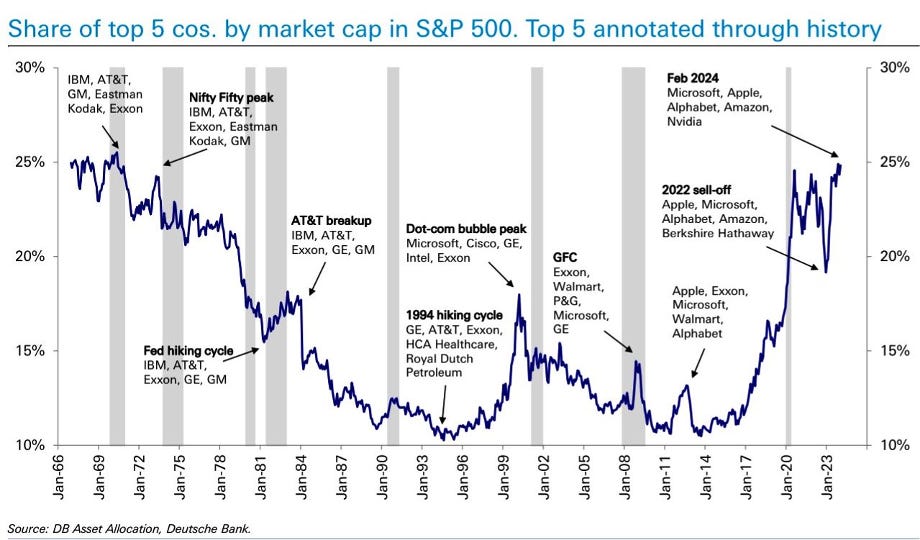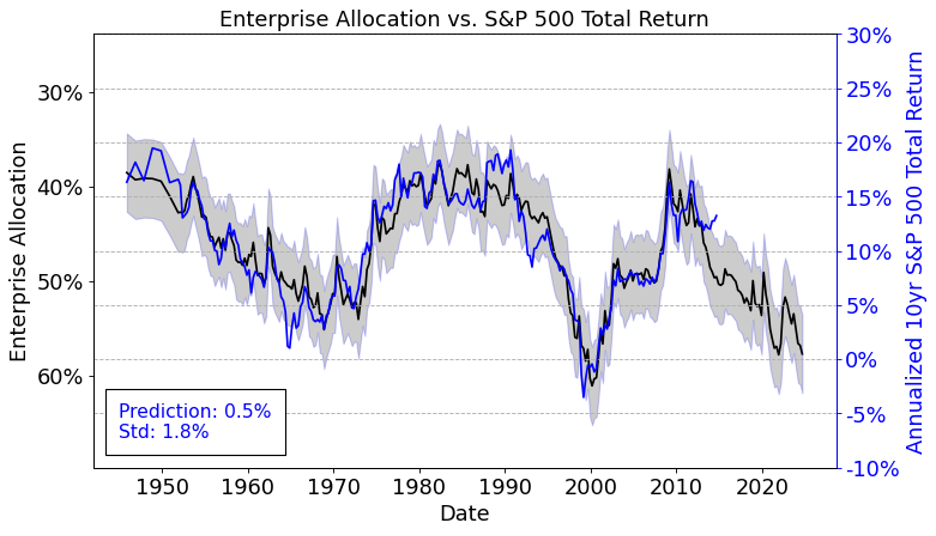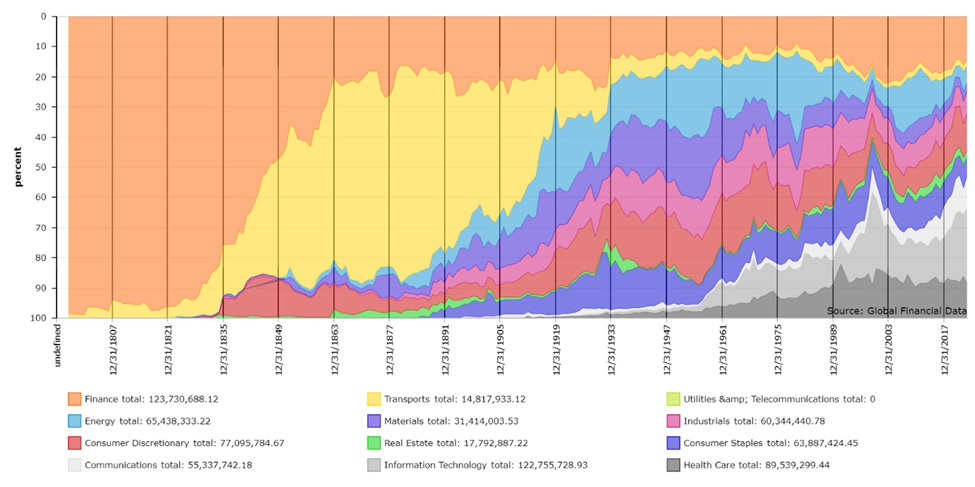Exercising Caution
My baseline investment plan is to hold 100% stocks. I’m young and I have a high tolerance for volatility. Generally, I invest 75% of it into the S&P 500 and diversify using the other 25% (mid-caps, small-caps, international, value, etc).
My portfolio has been especially concentrated in recent years. Up to 88% has been allocated to the S&P 500, with only 12% in mid-caps and small-caps. Sometimes I make active bets like this, but I never deviate too far from my baseline plan.
I started writing in March of last year about why I think concentration is now the wrong tilt for my stock holdings. I’ve since shifted my portfolio to 10% non-Mag 7 large-caps, 12% mid-caps, and 11% small-caps. This 33% total means I have a small tilt towards stock diversification, and I’m open to more.
Stock Market Concentration (pt. 2)
I have predominantly allocated my long-term indexed investments toward the S&P 500 for years now. Increasingly, however, I’m worried about how little diversification I’m getting from an S&P 500 index fund.
In October, I wrote about the increased dangers that stock investors are facing in the event of a recession. These extreme valuations have had me uncomfortable with a 100% allocation to stocks.
When Valuations Matter
Stock valuations have remained high for a few years now, and yet stocks have mostly shrugged off those concerns. The price of the S&P 500 is up 34.3% over the past year and 95.8% over the past five years.
I again attempted my hand at illustrating an environment that will favor diversification in February. This time, however, I wrote more broadly about diversification. Asset-class diversification.
A History of Financial Manias
I’m hoping this accumulation of ideas and comparisons will evoke both a qualitative and quantitative characterization of today’s financial landscape. I’m not sure you should act with any haste on these ideas.
Now that additional information has been revealed about our economic situation and the dangers of high valuations suddenly seem relevant, I’ve started to act on that broader idea of diversification.
I am slightly deviating from my 100% baseline stock allocation. I have already allocated 7% in recent months to some combination of cash, bonds, gold, and mortgage payments. I’m allowing myself to go as far as 20% by the end of Q2. Not too far, but not insignificant.
For those of you who just want to stick to your baseline, trust your plan. Retirees should trust that a plan of broad diversification will get them through good times and bad. Young investors should trust that lower stock prices are good for them and their future ability to accumulate equity.
At the very least, I wanted to write somewhat explicitly that I think the next 12-24 months will be difficult for investors. I’m not convinced of this fact, which is why my actions have been small so far. But I do think the odds are decently high and increasing.





Insightful as always! There certainly is cause for caution. I’m also pretty much entirely in stocks as a younger investor and I still think that’s the right approach but with gold at an all time high it might make sense to take some profits or at least diversify more as you suggest. Keep the great content coming Vince!